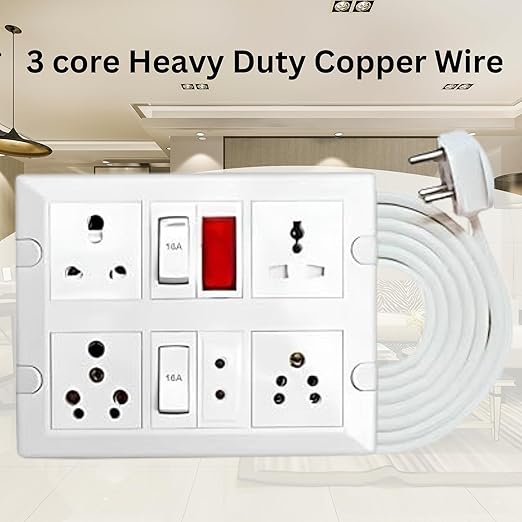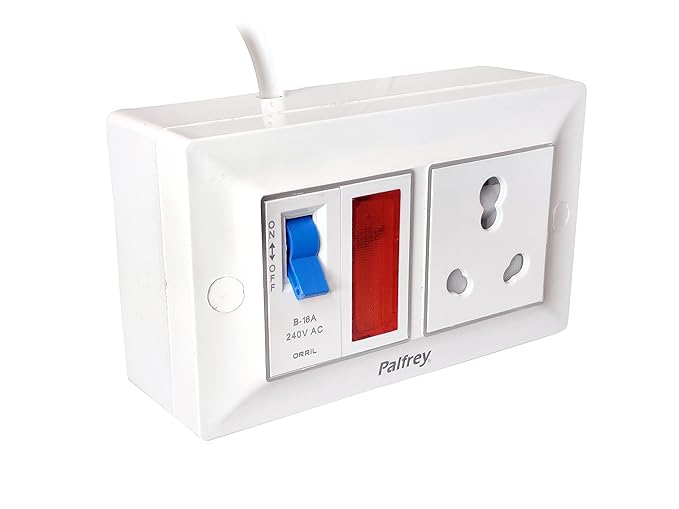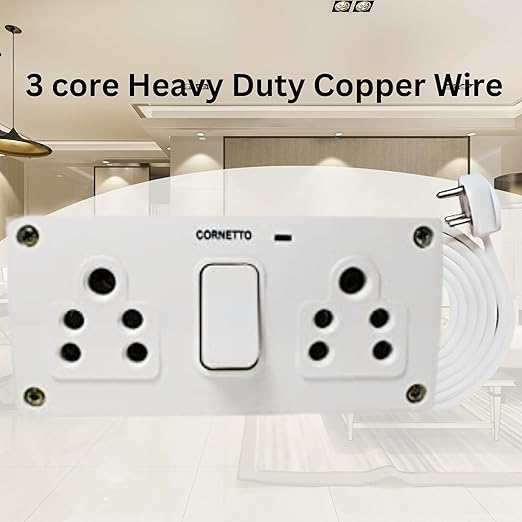Standard extension boards might handle your laptop or phone charger, but what about a microwave, heater, or power tools? That’s where heavy duty extension boards come in. Designed for higher current ratings and better durability, these boards are a must-have for power-hungry devices.
What is a Heavy Duty Extension Board?
A heavy duty extension board is built with:
✔ Higher rated sockets (10A, 15A, or even 16A)
✔ Thicker, heavy-gauge copper wires
✔ Flame-retardant or industrial-grade plastic body
✔ Stronger surge protection
✔ Sometimes built-in circuit breakers
These boards are engineered to withstand frequent heavy loads without overheating.
Where Should You Use a Heavy Duty Extension Board?
✅ Kitchens (for microwave ovens, induction cookers, mixers)
✅ Workshops (drills, saws, air compressors)
✅ Living rooms (ACs, high-wattage heaters)
✅ Offices (multiple desktops, printers, routers)
Top Picks for Heavy Duty Extension Boards in 2025
1️⃣ Anchor 16A Heavy Duty Extension Board
- 2 sockets with 16A switches
- Heat-resistant body
- 3-meter thick power cord
- ISI marked
2️⃣ GM Heavy Duty Spike Guard 3068
- 4 universal sockets with 16A capacity
- Surge protection up to 6500A
- Master switch
- Overload reset button
3️⃣ Belkin Essential Heavy Duty Series
- 6 sockets, 16A rating
- 900-joule surge protection
- Fire-resistant housing
- 3-year warranty
Buying Checklist for Heavy Duty Extension Boards
✅ Minimum 16A rated sockets
✅ High-quality copper wires
✅ Flame-retardant casing
✅ Surge protection (at least 900 joules)
✅ ISI/BIS certification
✅ Adequate cable thickness (1.5 sq. mm or more)
Safety First!
⚠️ Never run high-power appliances on a normal 6A extension board
⚠️ Do not daisy-chain even heavy duty boards
⚠️ Ensure proper earthing
⚠️ Switch off when not in use





